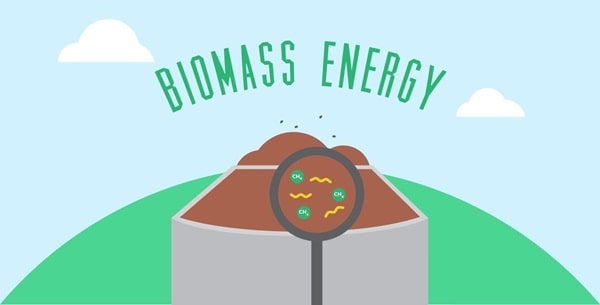Plants are everywhere! They are incredible life forms that cover our planet and sustain life. Not only do they give us oxygen, food, and medicines, but they also play vital roles in ecosystems, creating a balanced environment. Many plants have fascinating qualities and unique adaptations that are often overlooked. Let’s explore some fun and interesting facts about plants that will make you love them even more!
1. Plants Can Communicate with Each Other
Though plants don’t have voices, they have their ways of communicating. Research has shown that certain plants release chemicals when they’re being eaten by insects or animals. These chemicals can alert nearby plants to produce their own defenses, such as toxins or protective chemicals, to deter the herbivore. This unique “plant communication” helps them survive in nature.

2. The Oldest Known Plant on Earth is Over 80,000 Years Old
The world’s oldest known living organism is a plant colony in Utah, USA, called Pando or the “Trembling Giant.” This group of quaking aspens is believed to be over 80,000 years old. They share a single root system, making them genetically identical and enabling the colony to live through many generations.
3. Bamboo is the Fastest-Growing Plant
Bamboo can grow exceptionally fast. Some species can grow up to 91 cm (around 35 inches) in a single day under optimal conditions. This makes it the fastest-growing plant on Earth, which is why bamboo is often used in sustainable practices, construction, and more.
4. Plants Make Their Own Food Through Photosynthesis
One of the most remarkable features of plants is their ability to create their own food. Through a process called photosynthesis, plants use sunlight, carbon dioxide, and water to produce glucose, their source of energy. This process also releases oxygen as a byproduct, which is essential for life on Earth.
5. Some Plants Are Carnivorous
Certain plants, like the Venus flytrap, pitcher plants, and sundews, supplement their diet by consuming insects and small animals. These plants are typically found in nutrient-poor soil, so they rely on trapping insects for the nitrogen and other minerals they need. They have adapted incredible mechanisms to lure, trap, and digest their prey, showing nature’s adaptability.
6. Trees Improve Air Quality and Mental Health
Apart from providing oxygen, trees play a crucial role in purifying the air. They absorb pollutants like nitrogen oxides, ammonia, and sulfur dioxide. Studies have also shown that spending time around trees and greenery can significantly reduce stress, enhance mood, and even improve cognitive functions.
7. Cactus Plants Are Masters of Water Conservation
Cacti have evolved to survive in some of the harshest desert conditions on Earth. They have thick, waxy skins that minimize water loss, and their spines (modified leaves) reduce evaporation and protect them from animals. Many cacti also have shallow root systems to quickly absorb any rain, which is rare in desert regions.
8. Bananas Are Berries, but Strawberries Are Not!
Botanically speaking, bananas are classified as berries because they develop from a single ovary and have seeds inside (although they are often bred to be seedless). In contrast, strawberries aren’t berries in the scientific sense because their seeds are on the outside rather than inside the fruit.
9. The Smell of Freshly Cut Grass is a Plant’s Defense Mechanism
The pleasant, earthy scent we associate with freshly cut grass is actually a chemical reaction. When grass is cut or damaged, it releases volatile organic compounds known as green leaf volatiles (GLVs). These chemicals act as a distress signal to other plants, encouraging them to fortify their defenses.
10. Peonies, Roses, and Some Other Flowers Have Healing Properties
For centuries, many plants and flowers have been used for their medicinal properties. Peonies, roses, chamomile, and calendula are known for their anti-inflammatory and soothing qualities, often used in skincare or health treatments. In Ayurveda, plants like neem, tulsi, and turmeric are highly revered for their medicinal uses.
11. Some Plants Bloom Only Once in Their Lifetime
The Titan Arum, also known as the “corpse flower,” is famous for its rare blooming, which occurs only once every 7 to 10 years. Its bloom lasts just a few days and emits a strong odor resembling rotting flesh, attracting insects for pollination. This rare event draws attention from plant enthusiasts and nature lovers around the world.
12. Plants Can Respond to Music and Sounds
Various studies have suggested that plants might respond to music, sounds, and even touch. Researchers have found that certain types of classical music or calming sounds can promote growth in plants, while loud noises can potentially hinder it. Though plants don’t “hear” like humans, vibrations may play a role in their development.
13. Certain Plants Are Natural Pest Repellents
Plants like basil, mint, lavender, and marigold are natural insect repellents. They produce certain oils or compounds that deter pests, making them beneficial for gardens and households. For instance, basil is excellent for repelling mosquitoes, while lavender keeps moths and flies away.
14. Plants Have Their Own Immune System
Just like humans, plants have immune systems to protect themselves from pathogens. When attacked by bacteria or viruses, they produce specific proteins to contain the infection and prevent it from spreading. Some plants even sacrifice infected parts to save the rest, showing a complex self-preservation strategy.
15. Aloe Vera is Known as the “Plant of Immortality”
Aloe vera is packed with healing properties, especially for skin conditions. Known for its soothing effects, aloe vera gel is used worldwide to treat burns, cuts, and sunburns. The Egyptians considered it the “plant of immortality,” as it has a long shelf life and provides lasting medicinal benefits.
Conclusion
Plants are truly amazing and full of wonders! From making their own food to communicating with each other, they do more than we can imagine. Next time you see a plant, remember all the incredible things it does for our planet.


